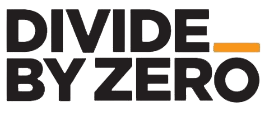FAQ about 3D Printing Materials
What is a PLA Filament?
PLA (Polylactic acid) is biodegradable thermoplastic derived mostly from corn. Due to its brittle nature, PLA is not recommended for 3D printing. Printed object may break down after a few months.
Furthermore, the material has sharp edges when it breaks, making it a hazard especially when removing the support material from printed parts.
What kind of plastic filaments can be used?
ABS, PLA, HIPS, TPU, PETG,PC, Carbon Fiber plastic materials are used on our 3D printers.
What material should I use? ABS or PLA?
Use of PLA is avoided as it has lower strength as compared to ABS when it absorbs moisture. Acrylonitrile-Butadiene-Styrene (ABS) printed parts have a strong, hard, and rigid output.
ABS is also chemical resistant
Dimensional stability is perfect of 3D printing
It can be electroplated for greater high-impact resistance, tensile strength and stiffness
Excellent high and low temperature performance
It is also resistive to many plasticisers and has excellent ductility and flexibility
What colors filaments are available for printing?
At Divide By Zero, we have a range of colors in different material types readily available. Check out our collection of filaments here: www.divbyz.com/filament
Can I use any commonly available filaments?
Our filaments have been tested and they confirm to our 3D printer’s specifications. Other filaments may be used. However, we recommend not doing so, as some filaments work poorly, specifically, non-virgin plastics. This can also cause damage to the extruder head and machine.
Can I use multiple colors?
Yes, you can use multiple colors. You can use Accucraft i250 D is a dual nozzle 3D printer in which you can use 2 colours.To have more than two color in a single object, you must change the filament during the printing process. This can be done easily by pausing the print in the software, and then using the utility to extract the existing filament and initiate the extrusion of the new filament.
What grade of ABS is being used? Can you share the data sheets of the material?
We can provide the MSDS of ABS & as wellASTM 638 test reports of printed samples.

